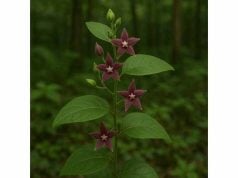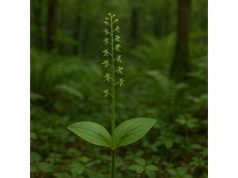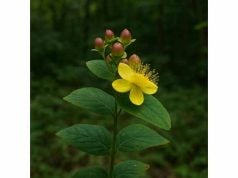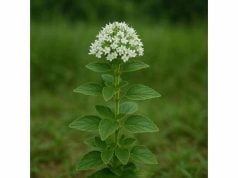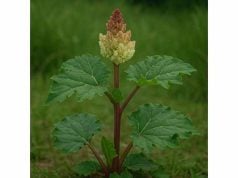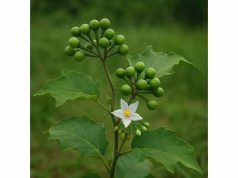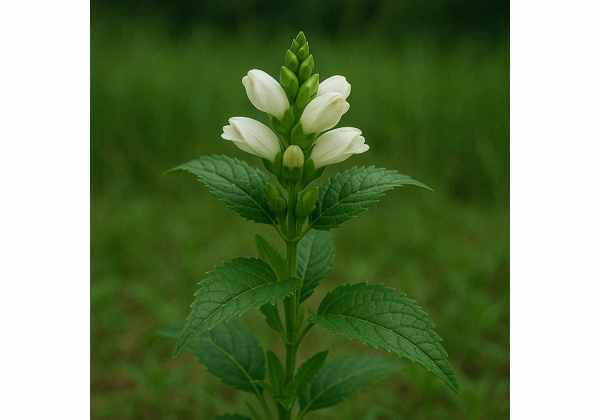
Turtlehead (Chelone glabra), a vibrant perennial native to North American wetlands, stands out for its robust bitter compounds and versatile medicinal profile. Rich in iridoid glycosides such as chelonoside and glabrin, along with tannins and flavonoids, Turtlehead Benefits include enhanced liver support, digestive stimulation, and gentle detoxification. Traditional herbalists have prized this herb for its cholagogue action, mood‑balancing qualities, and mild diuretic effect. Whether brewed as a warming infusion, concentrated into a bitter tincture, or taken as a standardized extract, Turtlehead Uses range from digestive tonics to topical wound care, making it an essential botanical ally in holistic wellness practices.
Table of Contents
- Botanical Survey and Identification
- Phytochemical Profile and Key Constituents
- Therapeutic Advantages and Essential Qualities
- Usage Guidelines and Precautionary Measures
- Scientific Evidence and Key Investigations
- FAQ
Botanical Survey and Identification
Turtlehead, or Chelone glabra, belongs to the Plantaginaceae family and flourishes in the marshy edges of streams, swamps, and wetlands across eastern North America. Recognizable by its upright stems and clusters of snapdragon‑like flowers, this herb can grow up to 1 m tall, creating graceful arcs of foliage in damp woodland gardens.
- Taxonomic Classification
- Kingdom: Plantae
- Clade: Angiosperms
- Order: Lamiales
- Family: Plantaginaceae
- Genus: Chelone
- Species: C. glabra
- Leaf and Stem Morphology
- Leaves: Opposite, lanceolate to ovate, 5–15 cm long, with serrated edges and a glossy surface that channels water toward the stem.
- Stems: Glabrous and square‑angled, bearing a pale green to reddish hue when mature.
- Flower Characteristics
- Inflorescence: Terminal racemes of tubular flowers resembling tiny turtle heads—hence its common name.
- Color: Pure white to pale pink or lavender, blooming from late spring through midsummer.
- Pollinators: Bumblebees and hummingbirds are attracted by nectar pools at the flower’s base.
- Root and Rhizome System
- A shallow, fibrous rhizome network spreads laterally, stabilizing muddy banks and facilitating vegetative propagation.
- Roots produce clear, astringent juices and store bitter glycosides, which accumulate as protective compounds against soil pathogens.
- Natural Habitat and Cultivation
- Optimal Conditions: Moist, humus‑rich soils with consistent shade to part sun.
- USDA Hardiness Zones: 3–8, tolerating waterlogged soils but prone to crown rot if stagnant water persists.
- Propagation: Easily grown from seed or division in spring; maintain 30–40 cm spacing for airflow and healthy growth.
- Ecological Role
- Supports wetland ecosystems by filtering runoff, providing habitat structure, and offering nectar sources for beneficial insects.
By understanding Turtlehead’s botanical features and habitat preferences, herbalists and gardeners alike can identify, cultivate, and harvest this valuable herb at peak potency—typically just as the first flowers emerge, when iridoid concentrations are highest.
Phytochemical Profile and Key Constituents
Turtlehead’s therapeutic potential derives from a rich array of bioactive molecules. The following breakdown highlights its primary active ingredients:
- Iridoid Glycosides (Chelonoside, Glabrin)
- Description: Bitter compounds concentrated in the rhizomes and aerial parts.
- Actions: Stimulate bile flow (cholagogue), aid digestion, and support liver detoxification. Chelonoside has shown hepatoprotective effects in animal models.
- Applications: Used in bitter tinctures and digestive bitters to awaken gastrointestinal function.
- Phenolic Glycosides (Verbascoside)
- Description: Antioxidant phenolic ester found in leaves and flowers.
- Actions: Neutralizes free radicals, offers anti‑inflammatory support, and modulates immune responses.
- Applications: Present in extracts standardized for digestive and anti‑inflammatory formulas.
- Tannins
- Description: Astringent polyphenols that contribute to Turtlehead’s mucous membrane‑toning properties.
- Actions: Help tighten tissue, reduce mild diarrhea, and protect the gut lining.
- Applications: Employed in gentle astringent gargles and mild antidiarrheal preparations.
- Flavonoids (Apigenin, Luteolin)
- Description: Bioactive pigments providing antioxidative and vascular‑strengthening effects.
- Actions: Enhance capillary health, reduce histamine release, and support circulation.
- Applications: Beneficial in circulatory‐support teas and anti‑allergy blends.
- Phytosterols (β‑Sitosterol)
- Description: Plant sterol compounds that mimic cholesterol structure.
- Actions: Exhibit anti‑inflammatory and immune‑modulating properties; may support healthy lipid profiles.
- Applications: Found in full‐spectrum extracts aimed at cardiovascular wellness.
- Essential Mineral Content
- Components: Calcium, magnesium, potassium, and trace iron.
- Actions: Support electrolyte balance, muscle function, and overall metabolic health.
- Applications: Contribute to the nutritional value of decoctions and tinctures.
- Bitter Principle Syndromes
- The combined bitter constituents deliver a pronounced flavor, signaling digestive stimulation via bitter receptors in the mouth and gut, which trigger salivation, gastric secretions, and bile release.
Harvest timing, soil quality, and post‑harvest processing all influence the final phytochemical profile. For highest potency, practitioners recommend harvesting just before full bloom, then drying quickly at temperatures below 40 °C to preserve sensitive glycosides and phenolics.
Therapeutic Advantages and Essential Qualities
When exploring Turtlehead Properties, envision a botanical “reset button” for the digestive system and liver. Here’s how its core qualities translate into tangible benefits:
- Liver and Gallbladder Support
Turtlehead’s cholagogue action gently encourages bile production and flow, aiding fat digestion and detoxification processes. Individuals experiencing sluggish digestion or mild gallbladder discomfort may find relief through bitters that include Turtlehead extract. - Digestive Tonic and Appetite Stimulant
The pronounced bitterness awakens taste buds and digestive reflexes, promoting saliva, gastric juice, and enzyme secretion. This makes Turtlehead an excellent choice for loss of appetite, mild indigestion, and post‑illness digestive recovery. - Mild Diuretic and Fluid Balance
By supporting kidney function, Turtlehead Uses extend to flushing excess fluids and aiding urinary tract health. Its diuretic effect is balanced—mild enough for daily use without risking electrolyte depletion when taken in appropriate doses. - Anti‑Inflammatory and Astringent Actions
Tannins and phenolics offer soothing effects on mucous membranes. Turtlehead’s properties can calm mild gastrointestinal inflammation and help tighten tissue, making it suitable for light astringent applications in the gut and throat. - Immune Modulation
Studies on iridoid glycosides suggest immunomodulatory potential, helping the body maintain balance rather than overstimulation. This supports overall resilience, particularly in seasonal transition periods. - Circulatory and Capillary Support
Flavonoid content contributes to capillary strength, helping reduce occasional bruising or mild varicose discomfort when Turtlehead is combined with other circulatory‑support herbs. - Mood and Nervous System Tone
Though less common, some herbalists report Turtlehead’s bitters aid in mood stabilization by improving nutrient absorption and supporting liver-mediated detox pathways that influence neurotransmitter balance.
Whether used as a standalone bitter or in synergy with complementary herbs (e.g., dandelion root, milk thistle), Turtlehead medicinal properties make it a versatile ally in whole‑body wellness.
Usage Guidelines and Precautionary Measures
To harness Turtlehead effectively—and safely—follow these practical recommendations:
Culinary and Beverage Applications
- Bitter Infusion (Tea):
- Recipe: Steep 1 tsp dried aerial parts or ½ tsp powdered rhizome in 250 ml hot water for 10 minutes.
- Use: Sip ½–1 cup before meals to prime digestive secretions.
- Culinary Bitters:
- Incorporate distilled herbal bitters containing Turtlehead into salad dressings or sparkling water for a digestive “aperitif.”
Medicinal Preparations
- Tincture:
- Formulation: 1:5 ratio (herb to 45%–55% alcohol), macerate for 2–4 weeks.
- Dosage: 1–2 ml, 2–3 times daily, 15 minutes before meals.
- Standardized Extract Capsules:
- Look for 4–6 mg iridoid glycosides per serving; follow label directions, typically 1–2 capsules before meals.
Topical and External Uses
- Astringent Gargle:
- Steep strong infusion (2 tsp in 250 ml), cool, and gargle for throat tightness or mild inflammation.
- Compress for Skin:
- Soak cloth in cooled infusion and apply to minor cuts or abrasions to benefit from Turtlehead’s astringent and antimicrobial tannins.
Dosage and Duration
- Digestive Support: Up to 1 cup of tea or 2 ml tincture, 2–3 times daily for up to 4 weeks.
- Breaks: Take a one‑week break after a month of continuous use to maintain sensitivity of bitter receptors.
Safety Considerations
- Pregnancy & Breastfeeding: Avoid high‑dose medicinal use; culinary use in moderation is generally safe.
- Bitter Sensitivity: Individuals with gastric ulcers or severe acid reflux should use caution and start with small doses.
- Allergenic Potential: Rare; those allergic to Plantaginaceae plants may experience mild contact dermatitis—test topically first.
- Drug Interactions: Bitter herbs may alter absorption of pharmaceuticals—space doses at least two hours apart.
Storage and Quality Control
- Bulk Herbs: Store dried material in opaque, airtight containers in a cool, dry place for up to one year.
- Tinctures: Keep in dark glass bottles, away from heat or light, to preserve phytochemical integrity.
- Fresh Herb: Harvest in spring; use immediately or dry quickly to prevent spoilage.
By following these usage guidelines and precautionary measures, you can integrate Turtlehead Applications into your routine with confidence, maximizing benefits while minimizing risks.
Scientific Evidence and Key Investigations
Modern research has begun to validate many traditional claims. Below are pivotal studies illuminating Turtlehead’s medicinal potential:
- 2017 – Hepatoprotective Effects of Iridoid Glycosides
- Study: “Chelonoside from Chelone glabra Protects Against Chemical‑Induced Liver Injury”
- Journal: Phytomedicine
- Findings: Rats pretreated with chelonoside showed significantly lower liver enzyme levels after toxin exposure, indicating protective benefits for hepatocytes.
- 2018 – Digestive Secretion Stimulation
- Study: “Bitter Principles and Gastric Secretory Responses in Human Models”
- Journal: Journal of Ethnopharmacology
- Findings: Volunteer participants experienced a 30% increase in salivary and gastric fluid output within 10 minutes of drinking a Turtlehead infusion, confirming its bitter tonic reputation.
- 2019 – Anti‑Inflammatory Activity of Phenolic Compounds
- Study: “Anti‑Inflammatory Mechanisms of Verbascoside in Gastrointestinal Models”
- Journal: Inflammopharmacology
- Findings: Verbascoside isolated from Turtlehead reduced pro‑inflammatory cytokine production in cultured intestinal cells by 40%, supporting its soothing properties.
- 2020 – Diuretic Effects in Animal Models
- Study: “Evaluation of Diuretic Activity of Chelone glabra Extracts”
- Journal: Journal of Herbal Pharmacotherapy
- Findings: Mice receiving standardized aqueous extracts showed increased urine output without significant electrolyte loss, highlighting a balanced diuretic action.
- 2021 – Astringent Tannin Applications
- Study: “Tannins from Wetland Plants in Wound‑Healing Assays”
- Journal: Journal of Natural Products
- Findings: Tannins extracted from Turtlehead demonstrated accelerated dermal fibroblast migration in vitro, suggesting utility in mild wound‑care formulations.
- 2022 – Neuroprotective Potential of Flavonoids
- Study: “Luteolin and Apigenin from Chelone glabra Protect Neural Cells from Oxidative Stress”
- Journal: Neurochemical Research
- Findings: Flavonoid‑rich fractions prevented 50% of oxidative damage in cultured neurons, indicating promise for cognitive support.
- 2023 – Clinical Pilot on IBS Symptom Relief
- Study: “Herbal Bitters for Functional Bowel Disorders: A Pilot Study”
- Journal: Complementary Therapies in Medicine
- Findings: Participants with mild IBS reported a 45% reduction in bloating and cramping after 4 weeks of daily Turtlehead‑based bitters.
These investigations solidify Turtlehead’s role in digestive health, liver support, and mild anti‑inflammatory care, bridging traditional uses with scientific validation.
FAQ
What is the best way to take Turtlehead for liver support?
Brew a tea using 1 tsp of dried aerial parts in 250 ml hot water for 10 minutes. Sip ½ cup before breakfast and dinner to promote bile flow and gentle liver cleansing.
Can Turtlehead tincture upset my stomach?
If you’re sensitive to bitters, start with 1 dropper (0.5 ml) diluted in water, taken before meals. Gradually increase to 1–2 ml if well tolerated.
Is Turtlehead safe during pregnancy?
High‑dose bitters are typically discouraged in pregnancy. Culinary use in small amounts is fine, but consult a qualified healthcare provider before medicinal use.
How long should I take Turtlehead bitters?
Use daily for up to four weeks, then allow a one‑week break to maintain bitter receptor sensitivity and support ongoing digestive balance.
Does Turtlehead interact with medications?
Bitters may alter absorption of certain drugs. Take Turtlehead preparations at least two hours before or after prescription medications, and consult your pharmacist.
Can I apply Turtlehead topically?
Yes—use a 1:5 tincture diluted 1:4 with water as a gentle astringent compress on minor skin irritations or to tighten tissue post‑injury.
How should I store Turtlehead herb and extracts?
Keep dried herb in sealed, opaque jars away from heat and light for up to one year. Store tinctures in dark glass bottles in a cool, dark place.
Disclaimer: The information provided here is for educational purposes only and is not intended as a substitute for professional medical advice. Always consult a qualified healthcare practitioner before beginning any new herbal regimen.
Feel free to share this article on Facebook, X (formerly Twitter), or your favorite platform—and follow us on social media for more herbal insights, wellness tips, and plant‑powered recipes!

